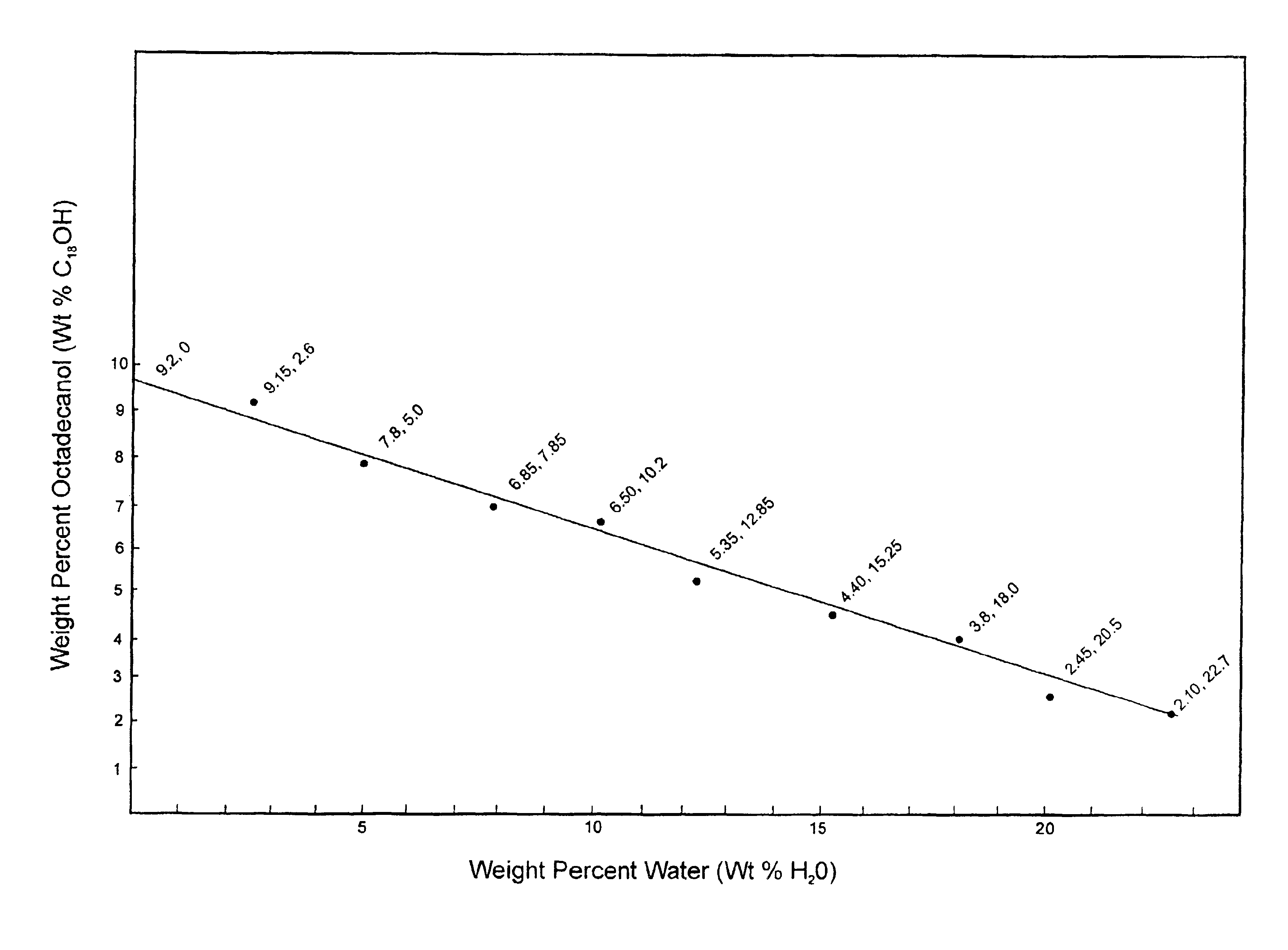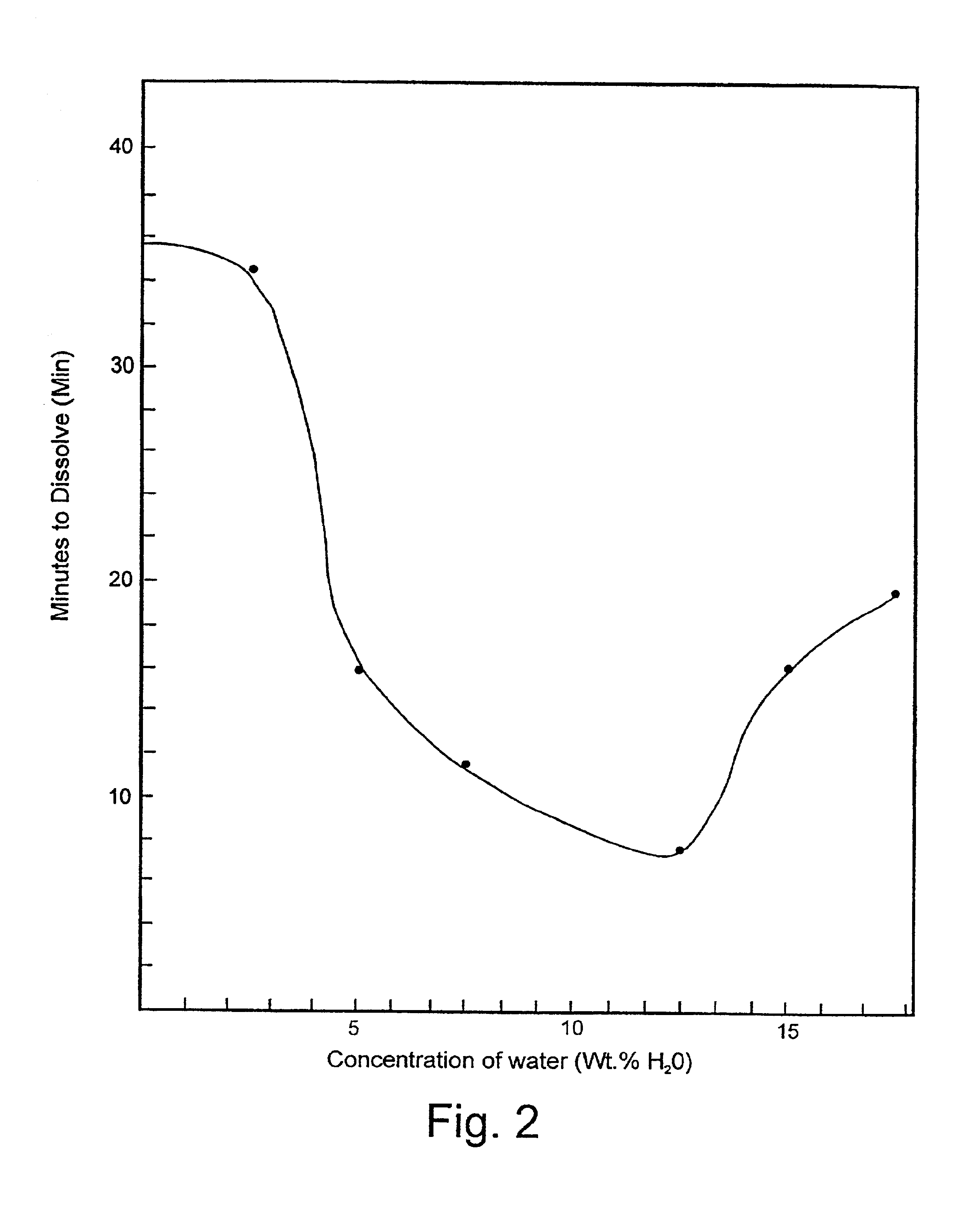An important implication of the field reports is that when the
laboratory research is left behind, fieldwork in
water conservation encounters numerous problems that are complex and difficult both to assess with precision and to counteract effectively.
Methods of investigation of monolayers conducted in the laboratory setting, including the inventor's own
laser interferometry techniques, possess little applicability where the fieldwork is concerned, unfortunately.
Effective distribution of the material in environments featuring not only a large scale, but more significantly, uncontrolled conditions, proved to be a stumbling block.
A
solvent much used in early work is
benzene, however
benzene proved to not escape the experimental region so thoroughly as intended.
Out at a lake or reservoir the theoretical amount of
monolayer forming material for a given surface
area coverage is not even particularly relevant as a
guideline, since it is known never to be nearly enough.
Naturally occurring uncontrolled factors cause substantial film forming materials losses, which are not really predictable, and it is known that the ordinary workers without exception agree on recourse to distributing an excess of material.
Therefore, if solute concentration is too low, in a solution using a
solvent that is much more costly than the solute, the resulting diseconomy and impracticality of making and dispensing large amounts of such a solution to conserve water should not be ignored and / or glossed over by mere technical points such as that the
solvent does, after all, dissolve the solute, thereby rendering a normal
solid distributable in a liquified form.
Besides inferior flexibility in this connection, it is known that particulate solids are susceptible to some causes of loss that either do not affect at all, or do not as seriously affect, distributed liquid forms of
evaporation retardant.
Manual scattering by a multi-boat fleet of volunteers has the drawback that major
water supply reservoirs are often sited at great distance from habitations of prospective volunteers.
The machines are more susceptible to clogging—by far—than are human fingers.
Two causes of material loss for solids distribution methods that do not affect liquid forms are
ingestion of flakes and particles by minnows, and heavy microbial growths colonizing any particles missed by the minnows.
An all-solids distribution approach can lose much of its
advantage respecting cheapness if significant material quantities are wasted even before an evaporation retarding film can be established.
Unfortunately, both basic distributionx of either an all-solids or a liquid form composition will face problems and causes of more losses after the monomolecular film of
aliphatic alcohol is formed.
Such a structure is a fragile entity which is not expected to long endure in natural outdoor settings.
Tear and
puncture resistance of a one molecule length thick film require highly sophisticated techniques to even measure, the magnitude is so low, and a film is susceptible to serious damage or outright disintegration by such simple uncontrolled events as hail, rain, choppy water, or even just flocks of birds alighting upon and afterwards taking off from a
monolayer-covered lake or reservoir.
Here it can be easily seen that materials costs go up substantially.
Several if not all possible causes of film lose may be operative at one time, but the deadlier two film destroyers are the
chop-caused outright disintegration and collapse onto the lee
shore due to wind-propelled rafting.
Additional and relatively minor losses of already formed
film material are caused by
photochemical degradation, oxidation, evaporation (not of underlying liquid but of the
alcohol film), and even
dissolution or blending into an underlying liquid body which is far from being the relatively pure water of laboratories.
If heavy-
cut detergent range aliphatic alcohols did not have this attraction of their molecular tails to oily
dirt, they would be useless in many of the applications which provide the commercial incentive for their
mass-production.
However high they went, those suggested concentrations had to N. Beredjick's personal knowledge caused two problems: 1. they destroyed film forming properties of the
aliphatic alcohol solute; and, 2. they caused undesirable solute
precipitation in containers subjected to wide temperature variation.
In the present inventor's opinion, although a solution in accordance with these teachings is as technically feasible as would have been expected at the time of the disclosure, for the covering of 50 ml. water in three-inch
diameter dishes, the teachings fail to afford an order of materials cost economy commensurate with justifying the large-scale use of an evaporation retardant made and distributed in the form of an alcoholic liquid solution.
First, it is expected that some urgent circumstance of drought will oneday require large quantities of evaporation retardants to be transported from the place of manufacture to where needed.
 Login to View More
Login to View More  Login to View More
Login to View More 


